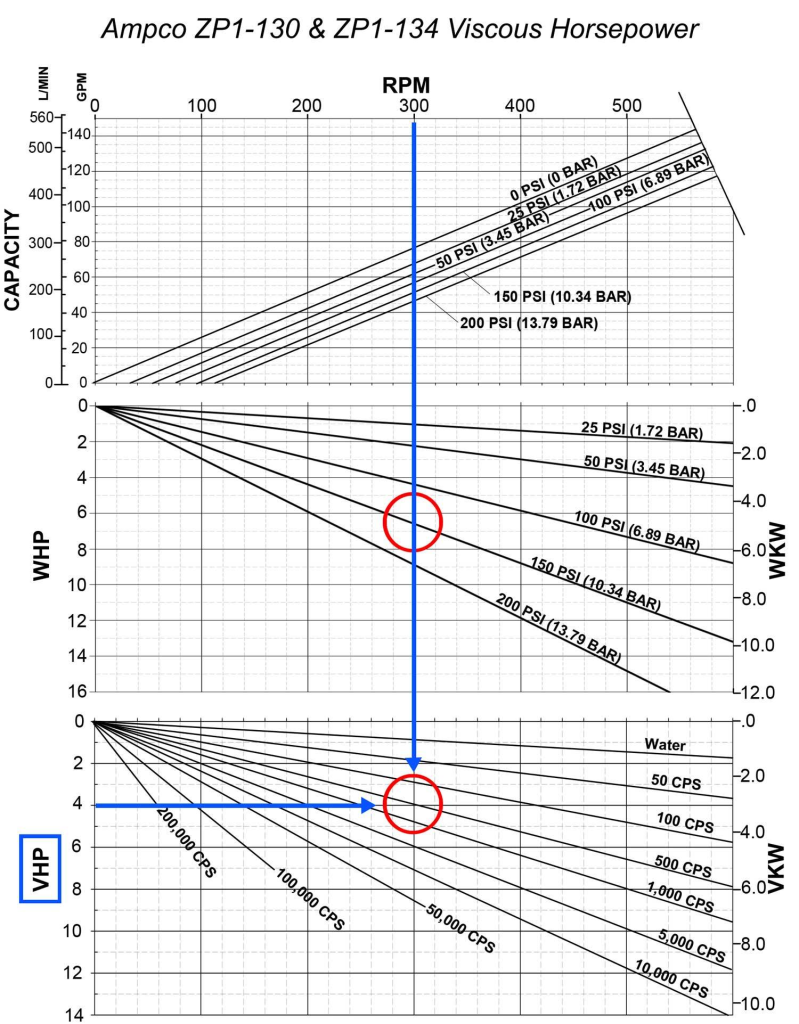Progressive cavity pumps are widely used in various industries for their ability to handle viscous fluids and provide a steady flow. Understanding the efficiency of these pumps is crucial for optimizing their performance and ensuring energy savings. One key tool in this analysis is the efficiency curve.
Understanding Efficiency Curves
An efficiency curve is a graphical representation that illustrates the performance of a pump at different operating conditions. In the case of a progressive cavity pump, the efficiency curve displays how effectively the pump converts mechanical energy into hydraulic energy across a range of flow rates and pressures.

Key Components of the Efficiency Curve
- Flow Rate: The volume of fluid the pump can move over time. This is typically represented on the x-axis of the curve.
- Efficiency: Usually depicted on the y-axis, efficiency measures the ratio of the useful work performed by the pump to the total energy consumed.
- Operating Points: Each point on the curve corresponds to specific flow rates and pressures, indicating how the pump performs under varying conditions.
Importance of the Efficiency Curve
The progressive cavity pump efficiency curve is vital for several reasons:
- Performance Optimization: By analyzing the curve, operators can identify the optimal operating range for the pump, ensuring it runs efficiently and reduces energy consumption.
- Energy Savings: Understanding where the pump operates most efficiently allows for adjustments that can lead to significant energy savings over time.
- System Design: Engineers can use the efficiency curve to select the appropriate pump for a specific application, ensuring compatibility with the intended fluid and system requirements.
Factors Influencing Efficiency
Several factors can impact the efficiency of a progressive cavity pump, which may be reflected in the efficiency curve:
- Viscosity of the Fluid: Higher viscosity fluids typically require more energy to pump, affecting overall efficiency.
- Temperature: The temperature of the fluid can influence viscosity and, consequently, the pump’s efficiency.
- Pump Wear: Over time, wear and tear on the pump components can lead to a decline in efficiency, shifting the curve to lower performance levels.

Interpreting the Efficiency Curve
Operators and engineers must understand how to interpret the efficiency curve for effective pump management:
- Peak Efficiency Point: Identifying the peak of the efficiency curve helps determine the best operating conditions for the pump.
- Operational Range: Understanding the range of flow rates and pressures where the pump maintains acceptable efficiency ensures reliable performance.
- Deviation from Ideal Performance: If the pump consistently operates outside its optimal range, it may indicate the need for maintenance, adjustments, or even replacement.
Conclusion
The efficiency curve of a progressive cavity pump is an essential tool for monitoring and optimizing pump performance. By providing insights into how the pump operates under various conditions, it enables operators to enhance energy efficiency, reduce operational costs, and ensure the longevity of the equipment. Understanding and utilizing this curve is critical for anyone involved in the selection, operation, or maintenance of progressive cavity pumps.